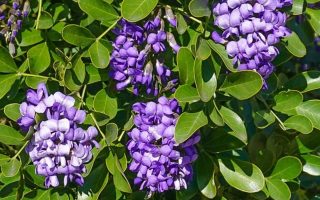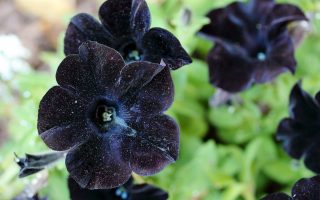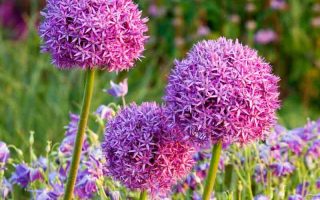kilkennybookcentre.com – The Satin Flower (Satinflower) is a stunning, yet often overlooked, perennial plant known for its delicate and lustrous blooms. Native to North America, this flower is admired for its rich colors and graceful appearance, which add a touch of elegance to any garden. With its bright, satiny petals and long-lasting blooms, the Satin Flower is a favorite among gardeners looking to add visual interest and beauty to their landscapes.
Appearance and Growth
The Satin Flower, scientifically known as Satinflower or Hesperis matronalis, is a low-maintenance, herbaceous perennial. It typically reaches a height of 1 to 3 feet, with tall, slender stems and attractive, lance-shaped leaves. The plant produces clusters of four-petaled flowers that come in a range of colors, including shades of purple, pink, white, and lavender. The petals of the flower have a soft, glossy sheen, which is how the plant earned its name. These satiny flowers are not only visually appealing but are also fragrant, often filling the garden with a sweet, spicy aroma.
The Satin Flower has a bushy, upright growth habit and can be a great addition to garden borders, wildflower meadows, and cottage gardens. It blooms in early to mid-spring, typically in April to May, depending on the climate. The flowers remain open for several weeks, and their striking appearance adds visual interest to gardens just as many other plants are beginning to flower.
Flowering and Pollination
The Satin Flower’s blooms are highly attractive to a variety of pollinators, including bees, butterflies, and hummingbirds. These creatures are drawn to the plant’s sweet fragrance and bright, vibrant petals. While the flowers are usually self-pollinating, they benefit from the visit of pollinators, which can help increase seed production and contribute to the overall health of the garden ecosystem.
In addition to their role in attracting pollinators, the flowers are long-lasting, often blooming for weeks, providing color and interest in the garden. After blooming, the plant produces small seed pods that can be collected if desired, or left to self-seed for natural spreading.
Care and Cultivation
Satin Flower is relatively easy to grow, making it a perfect choice for both beginner and experienced gardeners. It thrives in full sun but can also tolerate some light shade. The plant prefers well-drained soil that is rich in organic matter, but it can also grow in a variety of soil types, as long as drainage is good. Satin Flower is somewhat drought-tolerant once established, making it a suitable plant for low-maintenance gardens and xeriscaping.
To plant Satin Flower, it is best to sow seeds in early spring or fall, as the plant requires a cold period to germinate. The seeds should be lightly covered with soil and kept moist until they sprout. Once the plants are established, they require little maintenance, although regular deadheading of spent flowers will help promote a more continuous blooming period and prevent excessive self-seeding.
Fertilizing the Satin Flower is generally not necessary, but adding a balanced, organic fertilizer in the early spring can help promote healthy growth. The plant is resistant to most pests and diseases, though it may occasionally attract aphids or slugs, which can be managed using organic methods.
Uses in Landscaping
Satin Flower is a versatile and beautiful addition to many types of gardens. Its vibrant, satiny flowers and fragrant aroma make it an excellent choice for planting along garden borders, in wildflower meadows, or in mixed perennial beds. It also works well in cottage gardens, where its informal growth habit and bright colors add a charming touch.
The plant’s long blooming period and attractive flowers make it an excellent choice for creating focal points in the garden. Planting Satin Flower in clusters or drifts can create a beautiful display of color, especially when paired with other spring bloomers such as lupines, columbines, or daylilies. Additionally, its upright growth habit makes it a perfect companion plant for taller perennials like coneflowers, delphiniums, and black-eyed Susans.
Satin Flower is also an excellent choice for attracting pollinators to the garden. Its fragrance and nectar-rich blooms make it a favorite of bees and butterflies, which will help promote a healthy, biodiverse garden ecosystem.
Symbolism and Cultural Significance
The Satin Flower’s beauty and fragrance have made it a symbol of grace and elegance in various cultures. While it may not have the widespread symbolic significance of other flowers, it is often associated with admiration and respect due to its delicate appearance. In some regions, it is believed that growing Satin Flowers in the garden can bring peace and serenity to the home.
Historically, the plant has been used in herbalism for its medicinal properties, although it is more commonly grown for ornamental purposes today. Its mild, soothing fragrance has been utilized in perfumes and potpourri, adding a touch of luxury to homemade products.
Conclusion
The Satin Flower is a lovely and versatile perennial that adds both beauty and fragrance to gardens and landscapes. Its satiny petals, fragrant blooms, and ease of care make it a favorite among gardeners looking to enhance their gardens with a touch of elegance. Whether grown in borders, meadows, or cottage gardens, the Satin Flower brings a sense of charm and grace to any space. As a pollinator-friendly plant, it also plays a vital role in supporting local wildlife, making it a valuable addition to any garden.




